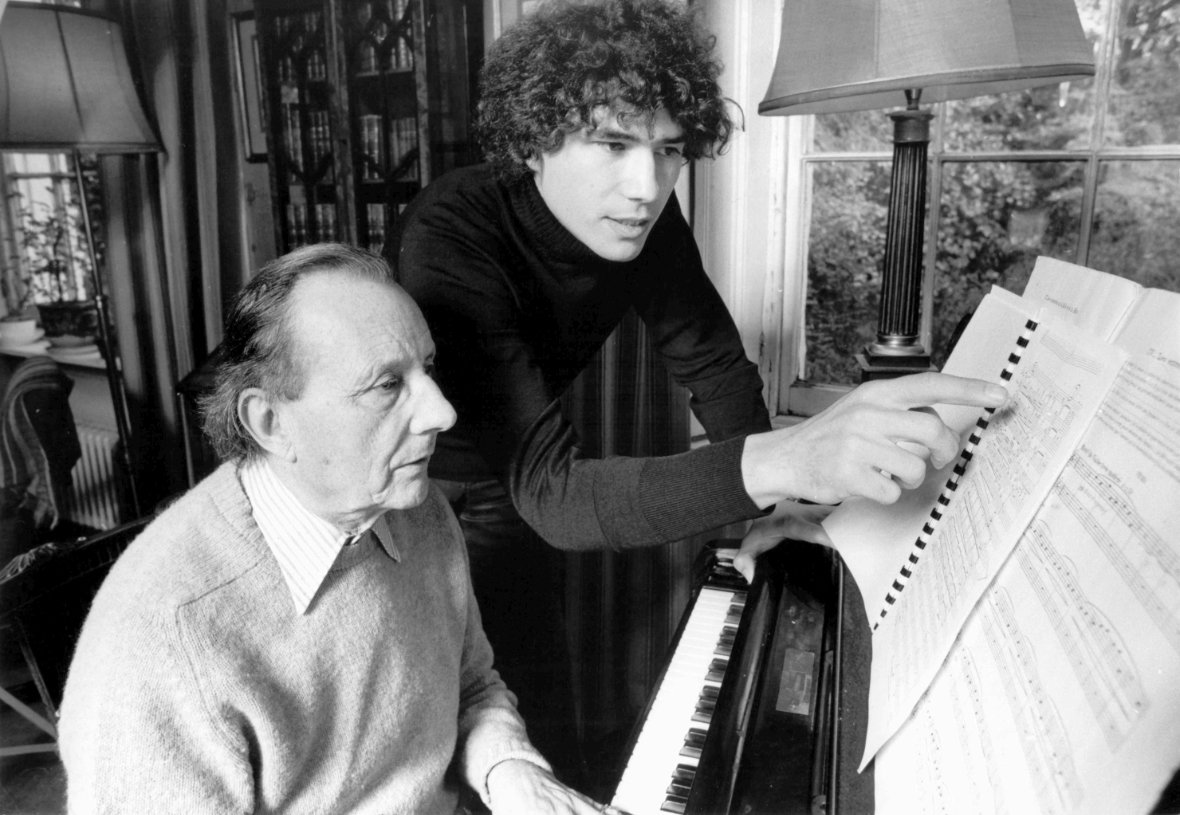Lennox Berkeley’s Piano Works
Michael Berkeley introduces musicological notes on nine of Lennox Berkeley’s piano works in ‘Composer Portraits: Lennox Berkeley’, published by the Music Sales Group
Lennox loved the piano – it was his instrument. He had no singing voice and did not play anything else but would be absorbed for hours in the piano music of Mozart, Schubert and Chopin. Indeed when Lennox was writing his opera Castaway for Aldeburgh in a double bill with William Walton’s The Bear, he joked that no worse experience could be imagined than William (a terrible pianist) accompanying Lennox singing. He would demonstrate excitedly the pianistic treasures in Fauré, Debussy and Ravel. Though not really an improviser, he did compose at the piano as well as at his desk, and ideas would come to him at the instrument.

In his study he would sit every morning at his Broadwood grand, now in my studio, and compose with a board or on the music stand with pencil and rubber. An abiding childhood memory is of encountering those little bits of twisted rubber that are left behind after the energetic excision of notes and whole passages. It always surprised me that Lennox had not emulated Britten in working more out of his head but, like Stravinsky, he seemed to need some kind of aural feedback.
Lennox was a competent pianist – good enough to play his own Introduction and Allegro for Two Pianos and Orchestra with William Glock and the LSO (under Sir Henry Wood), in the Queen’s Hall at the 1940 BBC Proms. Wood, as Tony Scotland relates in his Lennox and Freda, informed his diary that the ‘Berkeley was modern but interesting and good’. Lennox also gave the first performance of his wonderful Six Preludes in the Wigmore Hall in 1947, when the official pianist fainted at the keyboard as he was about to embark on the most difficult of the Preludes, No. 3. These pieces really show how Lennox’s appreciation of truly pianistic writing fired his own works in this genre.
As Peter Dickinson points out, while not always easy, Lennox’s writing for the piano is always gratefully written. He took pride in its lying under the hand and would exhibit a wicked twinkle when showing how a passage requiring a crossing of the hands would give pianists a momentary pause for thought. There is too a Poulencian delight in the bittersweet harmony – ‘naughty’ chords as he and Poulenc would chuckle to each other. An appreciative grin would appear on his face when he came to a particularly tasty passage in, for example, Ravel’s Mother Goose or Fauré’s Dolly Suite.
After dinner Lennox liked nothing more than to play music with friends and family. Often he would accompany my brother Julian on the flute, playing Bach and other Baroque fare, and my bass-baritone voice in chanson and songs by himself and Britten. Together we would work our way through Lennox’s Three Greek Songs, the Britten folk song arrangements and most of Poulenc’s settings, especially Hôtel and La Grenouillère. It was through studying the song accompaniments of Schubert and Britten that Lennox developed writing that was always as interesting and creative for the pianist as it was for the singer.
Many of the duet sessions with friends like Burnet Pavitt or Peter Dickinson, or just Julian and me, would include transcriptions of orchestral pieces by Mozart, Beethoven, Schubert and Brahms. It was as a result of these entertainments that Lennox wrote his Palm Court Waltz duet, as a mischievous digestif with which to end an evening. If no musicians were present to duet with, or to accompany, Lennox would oblige with solo Chopin as the coffee went round.
I consider Lennox’s output for the piano of particular significance and quality – indeed it seems to me that in his writing for piano we meet the quintessential creative spirit that was Lennox. This collection, ably guided by text from Peter Dickinson, is an important gathering together of some of Lennox’s finest creations, and a wonderful introduction to a sweet and refined personality.